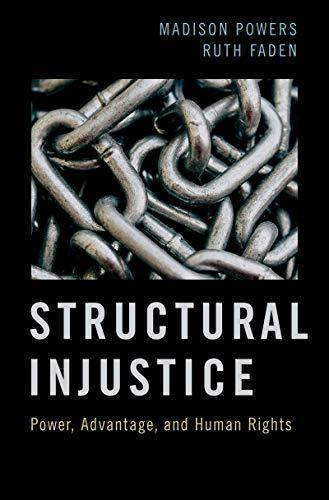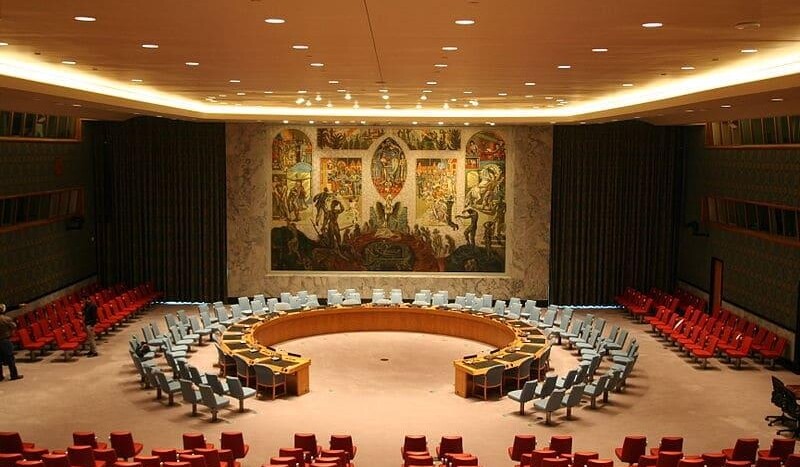 Structural Injustice: Power, Advantage, and Human Rights, Madison Powers and Ruth Faden (Oxford: Oxford University Press, 2019), 324 pp., cloth $74, eBook $64.99.
Structural Injustice: Power, Advantage, and Human Rights, Madison Powers and Ruth Faden (Oxford: Oxford University Press, 2019), 324 pp., cloth $74, eBook $64.99.
This is an urgently needed book. Madison Powers and Ruth Faden have constructed a powerfully reasoned, deeply learned, and richly perceptive theory that places the problem of structural injustice at the heart of political philosophy. Their arguments should change how philosophers think about human justice and will provide social justice advocates a valuable theoretical resource to guide and support their work.
The book examines the institutional structures and power relations that unfairly harm particular groups and develops a robust normative theory to explain why these phenomena merit condemnation and resistance. Drawing deeply on social science scholarship, it provides penetrating analyses of environmental, racial, gender, class, and global injustices, illuminating the empirical and normative features they have in common. The authors rightly associate their approach with the tradition of critical theory (p. 51), though they remain fully in dialogue with analytic normative philosophy debates regarding human justice and human rights.
Powers and Faden do not seek support from an overlapping consensus of cultural groups, a method that they argue incorporates a status quo bias. Instead they want to make sense of and lend support to the work of social justice movements pursuing egalitarian and emancipatory ends. Their book, published before the George Floyd protests for racial justice in the United States, articulates a message that social justice movements have long proclaimed and that some of the rest of us are belatedly coming to understand: “There are things that powerful, advantaged social groups are willing to do, or at least let happen, to members of other less powerful, less advantaged social groups that they would not be willing to do or let happen to members of their own social group” (p. 232). As befits an argument inspired by social justice movements, Powers and Faden draw heavily on the work of activists, journalists, and NGOs (p. 187). An underlying theme is that “the privileged often have limited insight into the lives of the disadvantaged; they know little of the magnitude and pervasiveness of the threats they face, the obstacles they endure, or the nature of the frustrations, resentments, fears, or insecurities they sometimes feel” (p. 52).
The authors begin their discussion with an account of wellbeing—not because they endorse consequentialism, but because, in one way or another, grave injustices involve harm to wellbeing. They identify the core elements of wellbeing as health, knowledge and understanding, personal security, equal respect, personal attachments, and self-determination. In defining wellbeing, they are led by the book’s theoretical aims— not to characterize the best possible life but rather a decent human life; not to guide interpersonal morality but rather the design of just social institutions. This is a rich and illuminating discussion that on its own constitutes a major contribution to moral and political philosophy.
Injustice has three main dimensions. The first involves severe deprivations of wellbeing. This is the key to understanding the idea of human rights, which the authors understand as morally required institutional protections against “predictable and severe but remediable” (p. 136) threats to fundamental wellbeing. Their capacious understanding of wellbeing helps the authors defend an interest-based account of human rights against objections that appeal to notions of dignity or control. The second dimension of injustice involves systemic disadvantage, whereby members of certain groups encounter obstacles that profoundly, pervasively, and near-inescapably lower their prospects for wellbeing in comparison to members of other groups. Unlike deprivation, disadvantage is a probabilistic concept, such that members of some groups have a “leg up” in comparison to others (p. 16). The third dimension involves unfair power relations, whereby certain groups experience subordination, exploitation, and social exclusion at the hands of other groups. Structural injustice is maintained both by laws and by informal norms, which often have a mutually reinforcing effect. It impacts social groups—such as those formed on the basis of race, gender, or economic class— whose status and definition, though not inalterably fixed, can endure for a long time.
Unfairness is wrong in itself. For this reason, structural unfairness (unfair patterns of advantage and unfair power relations) must not be collapsed into the problem of human rights violations. Yet, as explained in the authors’ “Linked Chain Argument,” the two problems are causally entwined. Structural unfairness creates the conditions for human rights violations; taking human rights seriously, therefore, requires us to combat structural unfairness. At the same time, human rights violations often constitute, cause, and reinforce structural unfairness; those motivated to fight structural unfairness, therefore, have reason to emphasize respect for human rights. Powers and Faden’s clear discussion should help dispel persistent confusion about the relation between social justice and human rights.
Chapter 6 discusses the transnational implications of the book’s central argument. If we care about unfairness, as we should, then we must attend to the transnational dimensions of structural injustice, including illegitimate exercises of external power by individual states, supranational institutions, and multinational corporations. The authors persuasively criticize the claim of “strong statists” that transnational obligations are limited to minimal humanitarianism. They defend a “Principle of Interstate Reciprocity,” which forbids states to pursue the advantage of their own citizens at the expense of the human rights or fair treatment of noncitizens, and use it to criticize current agricultural trade and climate change policies of wealthy states. Most of the chapter assumes that there exists some version of the nation-state system that defines the current global order, but the authors also question the legitimacy of such a system on human rights grounds because, in anything like its current form, it violates the “Principle of Moral Equal Protection,” according to which “every bearer of universal human rights is therefore also the bearer of universal claims of rightful enforceability” (p. 154).
In chapter 7, an empirical and theoretical tour de force, Powers and Faden trace the mechanisms of structural injustice in poor rural communities targeted for environmental damage, in racially segregated U.S. cities, and in urban slums in low- and middle-income countries. In chapter 8, they take up a generally neglected question in political philosophy: What modes of resistance, beyond democratic dialogue and short of armed rebellion, are morally appropriate for individuals and groups confronting structural injustice grounded in recalcitrant state policy and cultural norms? This is an inherently difficult question because it is in the nature of structural injustice to limit opportunities for redress through standard democratic processes and through legally permitted or morally unproblematic means. Powers and Faden identify moral considerations relevant to practices such as naming and shaming, boycotts, divestment campaigns, blockades, data hacks, and self-defense measures, and, in the course of their discussion, shed light on multiple forms of complicity with structural injustice.
The authors are regrettably silent on the unjust treatment of nonhuman animals, a silence still too common in political philosophy. I believe, however, that their conceptual framework can be adapted for a theory of interspecies justice. A multidimensional theory of animal wellbeing, on the model of Powers and Faden’s account of human wellbeing, can lay the foundation for an understanding of animal rights and the fairness norms that should govern humans’ relations to other animals. A growing literature takes up this project.
The preceding discussion does not do justice to the theoretical riches of this extraordinary work. The authors make conceptual breakthroughs that open new perspectives on old debates, and they write with authority and clarity on every issue they address. Their discussion is filled with wisdom and discernment, informed by a deep understanding of philosophical and social science literatures. I hope this book influences scholars, activists, policymakers, and the public at large; it should be widely studied and discussed, its arguments and insights put to productive use.
—Jamie Mayerfeld
Jamie Mayerfeld is professor of political science and adjunct professor in law, societies, and justice at the University of Washington. He is the author of The Promise of Human Rights: Constitutional Government, Democratic Legitimacy, and International Law (2016) and Suffering and Moral Responsibility (1999).
More in this issue

Fall 2020 (34.3) • Review
Surrogate Warfare: The Transformation of War in the Twenty-First Century
In this excellent survey and analysis of the debates raised by the use of surrogates in war, Andreas Krieg and Jean-Marc Rickli make a compelling ...
Fall 2020 (34.3) • Review
Why Nationalism
Yael Tamir’s Why Nationalism is a very good, very timely, and very unfashionable book.